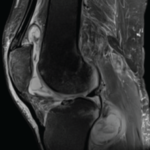Perhaps it is not surprising that a chronic polyarthritis, such as rheumatoid arthritis (RA), would have been considered a form of a tuberculous infection.
Before the advent of effective antimicrobial therapy for TB, when alchemists held sway, they preferred using heavy metals, such as arsenic, mercury and gold, to temporarily stave off the relentless gallop of MTB. The gold salt, sanocrysin, was prescribed for about a decade, and although its toxicity and lack of clinical anti-microbicide activity doomed its use, a curious thing happened.3 Gold salts seemed to benefit those patients with the misidentified tuberculous polyarthritis, who, in fact had RA. This was first noted in France and spread quickly to the United Kingdom, where gold therapy gained prominence before making its way across the ocean to North America and the rest of the world. Over the course of the next 50 years, gold salt injections became the mainstay of RA therapeutics.
But the story of TB has not been a singular tale of doom. Out of its misery, we have learned quite a bit about biology, about how our immune systems work and fail, and how social determinants, such as poverty, overcrowded living conditions and malnutrition, can affect life and death.
Perhaps it is not surprising that a chronic polyarthritis, such as RA, would have been considered a form of a tuberculous infection.
Galloping Consumption
In the Mexican state of Yucatan, among the decayed ruins of a Mayan town known as Dzibilchaltun, sits a prominent structure known as the Temple of the Seven Dolls—so named because of seven terra cotta figurines discovered inside it at the time of its excavation during the latter part of the 20th century.4
These anthropomorphic figurines appear to have been placed as offerings below the temple floor about a thousand years ago. At least one of them displays a markedly kyphotic thoracic spine, reminiscent of the disfiguring condition that is tuberculosis of the spine, or Pott’s disease. If correct, this would imply that TB existed in this hemisphere well before the arrival of Christopher Columbus, who has previously been implicated in unwittingly ferrying infected passengers across the seas on his voyage to America.
What we are fairly certain of is that MTB emerged about 70,000 years ago, when it accompanied migrations of anatomically modern humans out of Africa, and it expanded as a consequence of increases in human population density during the Neolithic Era.5 Crowd diseases are generally highly virulent and depend on high host population densities to maximize pathogen transmission and reduce the risk of pathogen extinction through depletion of susceptible hosts.


